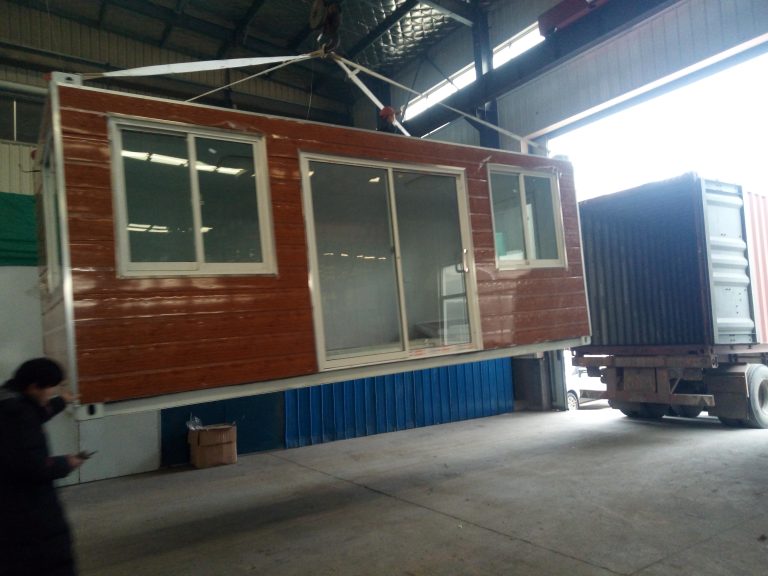Sustainable transformation of container house and technology practice of energy saving and emission reduction
Inhoudsopgave
Benefits of Sustainable Transformation of Container House
Sustainable transformation of container houses has become increasingly popular in recent years as more people are looking for eco-friendly and cost-effective housing solutions. By repurposing shipping containers into livable spaces, individuals can reduce their carbon footprint and contribute to a more sustainable future. There are numerous benefits to transforming container houses in this way, including energy efficiency, reduced construction costs, and increased durability.
One of the primary benefits of sustainable transformation of container houses is the energy efficiency that can be achieved. By incorporating energy-saving technologies such as solar panels, energy-efficient appliances, and proper insulation, container houses can significantly reduce their energy consumption. This not only helps to lower utility bills for homeowners but also reduces the overall environmental impact of the home. Additionally, the compact size of container houses makes it easier to heat and cool, further contributing to energy savings.
Another advantage of transforming container houses is the reduced construction costs compared to traditional housing. Shipping containers are readily available and relatively inexpensive, making them a cost-effective building material. Additionally, the modular nature of container houses allows for easy customization and expansion, providing homeowners with flexibility in design and layout. This can result in significant savings on construction costs compared to traditional homes, making container houses an attractive option for those looking to build a sustainable and affordable home.
In addition to energy efficiency and cost savings, sustainable transformation of container houses also offers increased durability and longevity. Shipping containers are designed to withstand harsh conditions during transportation, making them inherently strong and durable. When properly insulated and sealed, container houses can withstand extreme weather conditions and natural disasters, providing homeowners with a safe and secure living space. This durability not only ensures the longevity of the home but also reduces maintenance and repair costs over time.
Furthermore, transforming container houses into sustainable living spaces can help reduce waste and promote recycling. By repurposing shipping containers that would otherwise be discarded, individuals can contribute to the circular economy and reduce the environmental impact of construction materials. This practice of upcycling not only helps to conserve natural resources but also reduces the carbon footprint associated with traditional construction methods. By choosing to transform container houses sustainably, individuals can make a positive impact on the environment and support a more sustainable future.

In conclusion, the sustainable transformation of container houses offers numerous benefits, including energy efficiency, reduced construction costs, increased durability, and environmental sustainability. By incorporating energy-saving technologies, reducing waste, and promoting recycling, individuals can create eco-friendly and cost-effective housing solutions that contribute to a more sustainable future. As the demand for sustainable housing continues to grow, transforming container houses into livable spaces offers a practical and environmentally friendly alternative to traditional construction methods. By embracing sustainable practices and technology, individuals can reduce their carbon footprint and create a more sustainable living environment for future generations.
Implementing Technology Practices for Energy Saving and Emission Reduction in Container Homes
Container homes have gained popularity in recent years as a sustainable and cost-effective housing option. These homes are typically made from repurposed shipping containers, which not only reduces waste but also provides a sturdy and durable structure. However, in order to truly maximize the sustainability of container homes, it is important to implement technology practices for energy saving and emission reduction.
One of the key ways to achieve energy efficiency in container homes is through proper insulation. Shipping containers are made of metal, which conducts heat and cold easily. Without proper insulation, these homes can become uncomfortably hot in the summer and cold in the winter, leading to increased energy consumption for heating and cooling. By adding insulation to the walls, roof, and floor of a container home, homeowners can significantly reduce their energy usage and create a more comfortable living environment.
In addition to insulation, another important technology practice for energy saving in container homes is the use of energy-efficient appliances and fixtures. By choosing appliances with high Energy Star ratings, homeowners can reduce their electricity consumption and lower their utility bills. LED lighting is another energy-efficient option that can help to reduce energy usage in a container home. By incorporating these energy-saving technologies into their homes, residents can make a positive impact on the environment while also saving money in the long run.
Another important aspect of sustainable transformation in container homes is the use of renewable energy sources. Solar panels are a popular choice for container homeowners looking to reduce their reliance on traditional energy sources. By harnessing the power of the sun, residents can generate their own electricity and reduce their carbon footprint. In addition to solar panels, wind turbines can also be used to generate renewable energy for container homes. By combining these technologies, homeowners can create a self-sustaining energy system that reduces their impact on the environment.
In order to further reduce emissions and promote sustainability in container homes, it is important to consider water conservation practices. Rainwater harvesting systems can be installed to collect and store rainwater for use in irrigation and other non-potable applications. Greywater recycling systems can also be implemented to reuse water from sinks, showers, and washing machines for flushing toilets and watering plants. By reducing water usage and promoting water conservation, residents can minimize their environmental impact and create a more sustainable living environment.
Overall, the sustainable transformation of container homes requires a holistic approach that incorporates technology practices for energy saving and emission reduction. By implementing proper insulation, energy-efficient appliances, renewable energy sources, and water conservation practices, homeowners can create a more sustainable and environmentally friendly living space. With the right technologies and practices in place, container homes can be transformed into truly sustainable dwellings that benefit both residents and the planet.






